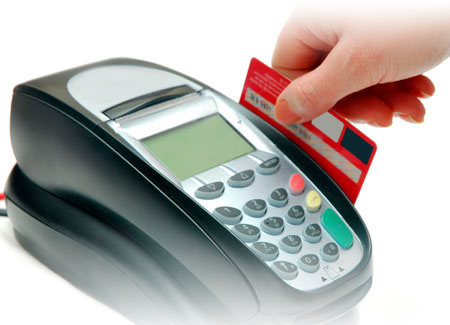|
|
|
|
Bonus: How to Get a U.S. Merchant Account for Your Non-U.S. Business
If your business has been growing fast for some time, it is very likely that you are getting dangerously close to hitting the upper limit of your merchant account. Another month or two and you may not be able to take the payments of a good number of customers, simply because your credit card processor won’t raise its limit. It’s time to act and find another service provider and the good news is that now you have much more experience than you did when you opened up your first merchant account and have a better idea of what you need. More importantly, you have a growing business behind you to help attract the interest of processors, which might have ignored you the first time around.
But you also need to resolve a discrepancy — your customers are mostly Americans and your business is not. That being the case, it would be great if you could settle your transactions in U.S. dollars and have your money deposited into a U.S. bank account at the beginning of each day, which you know is what your American competitors get, rather than keep getting weekly payouts. In other words, you need a U.S.-based merchant account. But how do you get one when you are based outside of the country? Well, here is what you need to do.
Laying the Groundwork
There are several steps you need to take, before you can apply for a U.S. merchant account:
- Get incorporated. The first thing you need to realize is that only U.S.-based businesses are eligible for U.S. merchant accounts — it is a necessary, though not a sufficient, condition, as we will see in a moment. Fortunately for you, there are a number of businesses (just do a Google search), which can help you incorporate in the U.S. — typically in Delaware, but some do it in other states. Keep in mind that, for our purposes at least, the choice of a state is irrelevant (there may be accounting considerations to make, but these are beyond the scope of my expertise; if you need help there, you will have to talk to an accountant).
- Get an office. Actually, that might be the first thing you need to do, but it typically comes as a part of the package offered by the company that is doing your incorporation, so it doesn’t really matter. What does matter is that you opt for a real physical presence, rather than just a mailing address. Make sure that you actually have an office — nowadays you can rent a desk in a shared office for as little as a couple of hundred dollars (maybe less, I’m not sure).
- Get a U.S. representative. Now, this is the most important part of the whole exercise, perhaps the main reason I’m writing this piece. By U.S. representative I don’t just mean a name to use in the incorporation paperwork and in your office rental agreement, but a person who will be acting on behalf of your company in the U.S. — no more and no less than that. This person will need to have a U.S. social security number (SSN) and will be the one who signs your credit card processing agreement. So, this person will be the face of your U.S. operations and if you are unable or unwilling to find one, you will not be able to get approved for a domestic merchant account and will have to settle for an offshore one — it is every bit as simple as that. Unfortunately, we get contacted by way too many otherwise perfectly qualified foreign businesses, which lack a U.S. representative and are therefore illegible for a domestic merchant account. Don’t make their mistake and make sure you have found your point person here, before you start spending money on other things.
- Get a business checking account. Having accomplished the previous tasks, this one will be merely a routine matter.
Now you are ready to apply for a merchant account. Where do you start?
Who Do You Apply With?
Before you start contacting merchant account providers and filling out application paperwork, you will have to assess your business’ risk classification. Try to do as objective and dispassionate a job at it as you can — this is not about finding ways to make your business look more appealing to a potential service provider. Keep in mind that your business is evaluated almost exclusively based on the industry it operates in and on its past history and you have no way of influencing either of these factors. Rather, the objective of this exercise is to establish for yourself the type of merchant account provider you should be looking for. Now, if yours is like most foreign businesses that contact us, it will fall into one high-risk category or other. Why? Well, to begin with, these are relatively high-volume, e-commerce operations, which immediately warrants a moderately high-risk label. Then it only takes something as minor as, say, a certain type of products sold or a modestly high chargeback or reversal ratio to push you into a higher risk group.
So, for the most part, you should be looking for a domestic processor with a high risk tolerance. Now, you may well be approved by a mainstream, low-risk processor like, say, First Data or Chase Paymentech, but taking that route would be an error. See, there is a reason why your business is classified as high-risk, just as there is a reason why there are processors specializing in servicing such businesses. And if you want to increase your chances of having a functioning merchant account for the long run, you should choose accordingly. But, you may argue, you can always get a new merchant account if First Data or someone like them decides to close you down. Well, have you actually tried to get a new merchant account, following a termination of your previous one? If you have, you would know how closely scrutinized everything about your business is, how much more paperwork you are required to supply, how much longer the process takes and how less advantageous the terms are. You don’t want to be in such a position. What you do want is a clean slate.
The other thing you need to avoid is filing too many applications. When processors learn that you have done so, they will get very cautious and slow the approval process down. The main reason is that underwriters see this as a sign that something may be wrong here: if everything was in order, they would think, you would only need to file one application to get an approval. Furthermore, a processor may be concerned that if you get approved by someone else, you may send fewer transactions their way, which is one sure way to make them unhappy. So don’t do it, but do your due diligence carefully and, when you’ve made your selection, contact your chosen processor and start working with them. If that doesn’t work out as planned, then you can contact your second choice.
The Takeaway
So here it is, if you follow the suggestions above, you will get a U.S. merchant account for your company. Now, it is perfectly alright to opt for an offshore solution instead — after all, it comes with no requirements for a U.S. corporation, representative and bank account; you can use the ones you already have. But these solutions come with their own disadvantages like higher processing rates, less-frequent payouts and generally less reliable bank acquirers. Either choice involves a trade-off and, ultimately, your decision will be determined by your own circumstances.
|
|
|
















